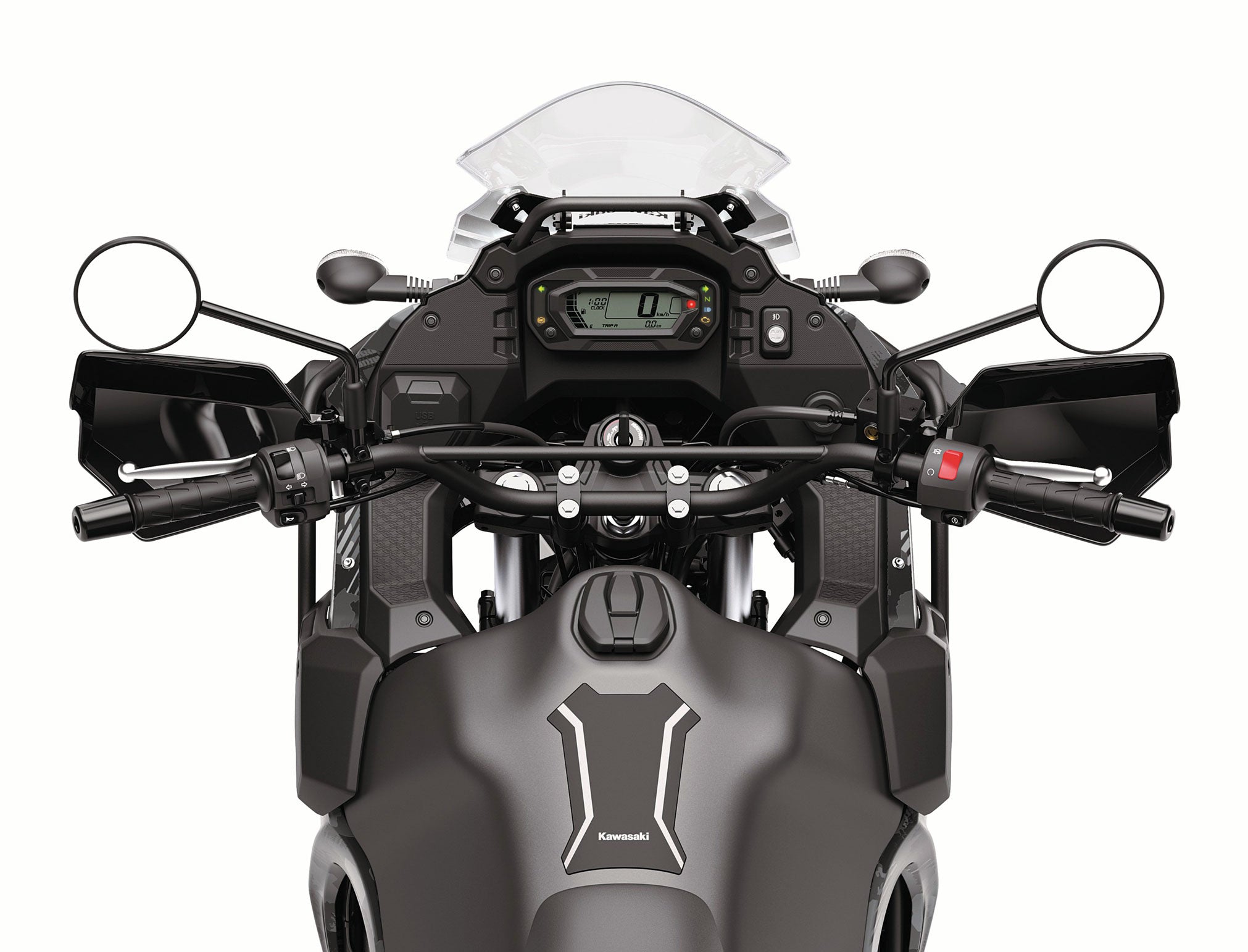2022 Kawasaki KLR650: Did the Legend Return?

There’s a recipe for success in some areas of motorcycling, and the Kawasaki KLR650 has nailed it in the dual-sport sector. That recipe? Simplicity.
Since its inception in the 1980s, the KLR650 has received a cult-like following as a dual-sport that wasn’t exactly great in any particular area. It was also able to go virtually anywhere with stone-like reliability.
And if you’re riding in a remote corner of the globe, I think we can all agree having a reliable bike is better than having a fast one.
The KLR left Kawasaki’s lineup after 2018, probably because of tightening emissions the carbureted bike couldn’t meet. After that we thought the bike was gone forever, to be replaced by the Versys 650.
However, here it is, back in action for the 2022 model year. And it looks almost the same as the old bike.
So, what’s changed? And just as importantly, does it continue the KLR’s legacy?
Let’s take a look.

The New, Old KLR
Judging by appearances, the new KLR hasn’t changed much from the last one. It still has that unmistakable look, with the beak in front, big, squared shoulders, and that aura of being able to go anywhere.
Four versions are available:
- Standard
- Standard with ABS
- Traveler (ABS, top case, power outlets)
- Adventure (ABS, Cypher Camo Gray Color, side cases, auxiliary lights, engine guard, tank pad, power outlets)
Besides those changes amid those versions, it’s no surprise to learn the bigger changes are found underneath the restyled bodywork.
Where else do we start than with the engine? It’s amazing to learn that Kawasaki has kept the 652cc single-cylinder engine the KLR has always been blessed with.
Still, as a sign of the times, the carb has had to be retired in favor of the more emissions-friendly electronic fuel injection using a 10-hole injector and a Keihin throttle body.
This is the biggest change, but several little changes have been made to help the engine shed some weight while improving the shifting. We’re talking different bearings, new shift forks, and new coatings applied that weren’t available (or too expensive) 30-plus years ago.
Another big change is the 26-amp generator that replaces the 17-amp piece the old bike had. KLR riders like to add all kinds of accessories to their bikes, and many need power to work.

The higher capacity generator, combined with the energy-conserving LED headlight, means the new KLR has 80 watts at your disposal to power electronics.
You’ll notice the KLR looks instantly recognizable because of its signature styling. The frame and subframe are basically the same as before, even though some probably would have preferred a bolt-on subframe for the inevitable tip-over.
Nonetheless, the extra stiffness the welded subframe gives is a worthy tradeoff. Plus, it’s strong enough to hold a passenger, luggage, or possibly an entire village. Maybe at the same time!
For a little extra stability, the swingarm is 30mm longer. Conventional forks are a throwback to the old KLR, and there’s very little reason to believe the insides are much different than before.
Kawi claims the shock’s new settings help it resist bottoming and withstand the weight of the aforementioned village you might put on the back. Suspension travel hasn’t changed – 7.9 inches up front, 7.3 inches in the back.
A bigger, 300mm front brake disc is a step up from the 254mm one before, and the rear disc is thicker, too. The added stopping power is definitely welcome, with ABS an option if you prefer.
There’s even an off-road setting for the ABS, allowing a little lock-up to help slow, slide, and point the bike. Some things don’t change, though – like tubes. Those are still in the tires.
To come back full circle and revisit the styling department, the overall design of the bike’s front, including the taller windscreen and revised side panels, is to help keep as much of the elements away from the rider as possible.
The new bike also gets digital instruments to help it stay with the times. Barely.

Other details include rubber-mounted handlebars and rubber inserts in the pegs to help dramatically damp out the inherent buzz from the engine. They’ve also been repositioned for better comfort.
The fuel tank still holds a massive 6.1 gallons, but its shape is a little different to make it easier to stand on the pegs. The fuel pump is also at the bottom of the tank, so you can use every last drop.
Without riding the new KLR, we can’t say with direct certainty that the legendary KLR has returned, but if we read between the lines it’s an easy assumption to make. If we’re being honest, the changes don’t amount to a massive difference.
Nor does it amount to an all-new bike. We’ll call it for what it is: an old KLR with fuel injection.

Some may find this a missed opportunity, while others are probably jumping for joy that the simple and rugged dual-sport they’ve known and loved is back – and only with the minimum of necessary changes.
To that end, the new KLR should appeal to those who value simplicity above all else. Besides, isn’t that what made the original mid-weight adventure dual sport so special all along?